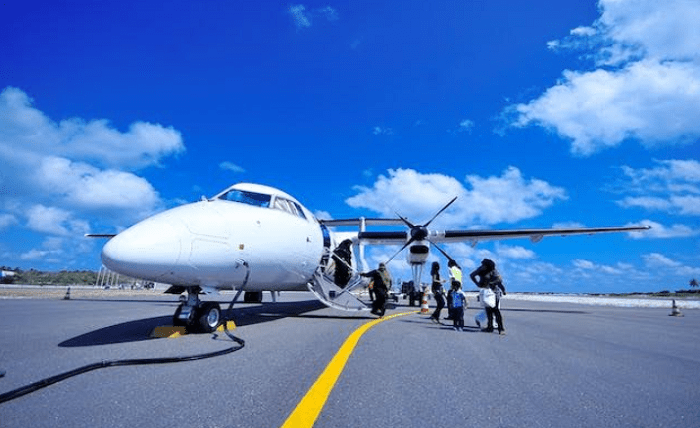The safety and reliability of air travel involve a meticulous process of aircraft maintenance before and after each flight. It’s more than routine checks; it’s the heartbeat of aviation safety. Before takeoff, skilled technicians rigorously examine engines, landing gear, and critical systems to guarantee a smooth departure. Once the aircraft touches down, the commitment continues with post-flight maintenance, addressing wear and tear to keep the aircraft in prime condition for future journeys.
Table of Contents
Ensuring a Smooth Takeoff
Before every flight, meticulous pre-flight safety checks are conducted to ensure a smooth takeoff. Expert technicians diligently inspect critical components such as engines, control surfaces, and communication systems. They assess the aircraft’s overall structural integrity and verify that all essential systems are in optimal working condition. These comprehensive inspections play a crucial role in identifying any potential issues before the aircraft even leaves the ground, contributing to the safety and reliability of the flight. Through these proactive measures, the aviation industry prioritizes passenger safety and aims for a trouble-free journey from the very beginning.
Engine Reliability
Before takeoff, skilled technicians meticulously examine the aircraft’s engines, assessing various components such as turbines, fuel systems, and electronic controls. This thorough examination is crucial in minimizing the likelihood of mid-air complications. By prioritizing engine maintenance, the aviation industry aims to provide passengers with a seamless and secure flight experience, reducing the chances of unexpected issues and contributing to the overall safety of air travel.
The Role of Regular Inspections
Even during the flight, the commitment to safety doesn’t waver, thanks to regular inspections. Continuous monitoring and inspections of vital systems, such as navigation and communication equipment, help ensure the aircraft operates seamlessly in the air. These regular inspections are essential for spotting possible problems early on and taking swift action. The aviation industry’s dedication to in-flight inspections enhances the overall reliability of aircraft systems, contributing to a secure and worry-free experience for passengers throughout their journey.
Well-Maintained Landing Gear Matters
A safe and smooth landing hinges on the meticulous maintenance of the landing gear, with a particular emphasis on the critical components such as the aircraft tires. Well-maintained landing gear plays a pivotal role in absorbing the impact during touchdown. These tires are crafted from durable materials designed to withstand immense pressure and provide optimal grip on the runway, minimizing wear and tear. Regular inspections of the Michelin aircraft tires contribute to a secure landing, promoting both passenger comfort and the longevity of the aircraft. The reliability of these tires is a testament to the industry’s commitment to the highest standards of safety in air travel.
Keeping Tomorrow’s Flight Secure
After the aircraft has safely landed, the commitment to safety continues through post-flight maintenance. Expert technicians carry out comprehensive examinations, evaluating the aircraft for indications of deterioration, impairment, or possible problems. By carefully examining the aircraft, any maintenance issues are quickly identified and taken care of, keeping it in top shape for the next flight. Post-flight maintenance goes beyond the visible components, encompassing a comprehensive review of critical systems and structural elements. By proactively addressing any wear and tear, the aviation industry prioritizes the safety and reliability of future flights, underscoring the dedication to providing secure air travel experiences for passengers.
Advanced Systems Maintenance
Maintaining the reliability of advanced systems is imperative for a secure and technologically sound flight experience. Skilled technicians delve into the intricacies of modern aircraft, meticulously inspecting complex avionics, software, and cutting-edge technology. This goes beyond routine checks, addressing the sophisticated systems that govern navigation, communication, and overall flight control. The commitment to advanced systems maintenance ensures that the aircraft operates at the forefront of technological capabilities, fostering a secure and efficient air travel environment for passengers. By staying ahead in the realm of aviation technology, the industry continues to prioritize safety and innovation in every journey.
Conclusion
Before takeoff, expert inspections ensure the aircraft is ready for a smooth departure, minimizing the risk of in-flight complications. Post-flight maintenance, addressing wear and tear, plays a crucial role in preparing the aircraft for future journeys. This commitment to upkeep not only enhances your immediate safety but also contributes to the overall reliability of air travel. As you board and disembark, remember that behind each flight is a dedicated team ensuring that every aspect of the aircraft is in optimal condition, ensuring a secure and worry-free travel experience for you and your fellow passengers.



